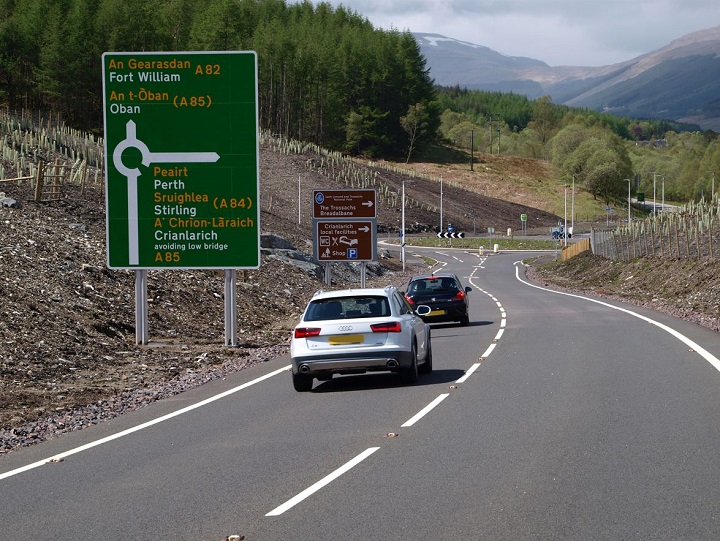
RoadPeace is calling for traditional road signs to be replaced with more passive structures, in a bid to minimise the damage caused to a vehicle and its occupants in the event of a crash.
The national road victims’ charity says it has supported ‘far too many families’ whose loved ones have been killed following collisions with trees, lamp posts and other street furniture.
The charity references the Institute of Highway Engineers’ Sign Structures Guide 2021, which states that when a vehicle strikes a structure, such as a standard lighting column at moderate to high speed, it is probable that the car will suffer serious structural damage.
The guide notes that during a high-speed impact, even if the car remains relatively undamaged, the forces on the internal organs of vehicle occupants can cause fatal or serious injuries, despite the use of seat belts and air bags.
Made in either aluminium, steel or glass reinforced plastic (GRP), passive sign posts have either high-energy, low-energy or non-energy absorbing qualities, which reduce the risk of injury to vehicle passengers in a collision.
Nick Simmons, CEO of RoadPeace, said: “There are too many objects at the roadside and we’ve supported far too many families whose loved ones have been killed following collisions with trees, lamp posts and other street furniture.
“Traditional poles and posts can have a serious adverse impact on vehicle passengers in a collision, so RoadPeace strongly supports the use of passive sign posts and masts.”
One organisation that makes passive sign posts is Varley and Gulliver, whose products are designed to shear or breakaway following a vehicle impact.
Stacy Willis, solutions manager at Varley and Gulliver, said: “Passive posts and masts play an important role in road casualty reduction by limiting the injuries sustained by a vehicle’s occupants in the event of a crash.
“We are really proud of our range of passive posts, which are strong enough to support large road signs, but are designed to break off safely if a vehicle collides with them, thus reducing the impact for the driver and other passengers.”
These dangerous road signs coming out of nowhere ! Surely the priority should be to establish why drivers are colliding with inoffensive objects and tighten rules and enforcement.
Paul Luton, Teddington
+1
The first comment asked if higher cost was holding back the more widespread use of passive structures.
There may be other reasons as well, but yes I think higher cost is a major one.
I have also noticed when passive structures are wiped out in a collision, they are sometimes replaced with conventional hardware.
As a biker, I assume the same lack-of-money issue is why ‘biker-safe’ crash barriers and post protectors haven’t really been rolled out much either.
Money (or lack of it) is almost always an issue in Highways Authorities.
Pat, Wales
+1
For roads at 50mph and above the requirements are quite clear via CD377 (previously TD19) and passive posts or protected normal posts are expected.
The main debate therefore is what is holding back specifying passive sign posts and passive lighting columns on 40mph and below roads? Is it the extra cost? Is it the lack of a national instruction? Is the perception that flying debris is more of a liability than when hitting a normal post? I would think that design guidance is clear enough once you have decided to use passive products but are such designs being ignored without good reason?
Peter Whitfield, Liverpool
+4